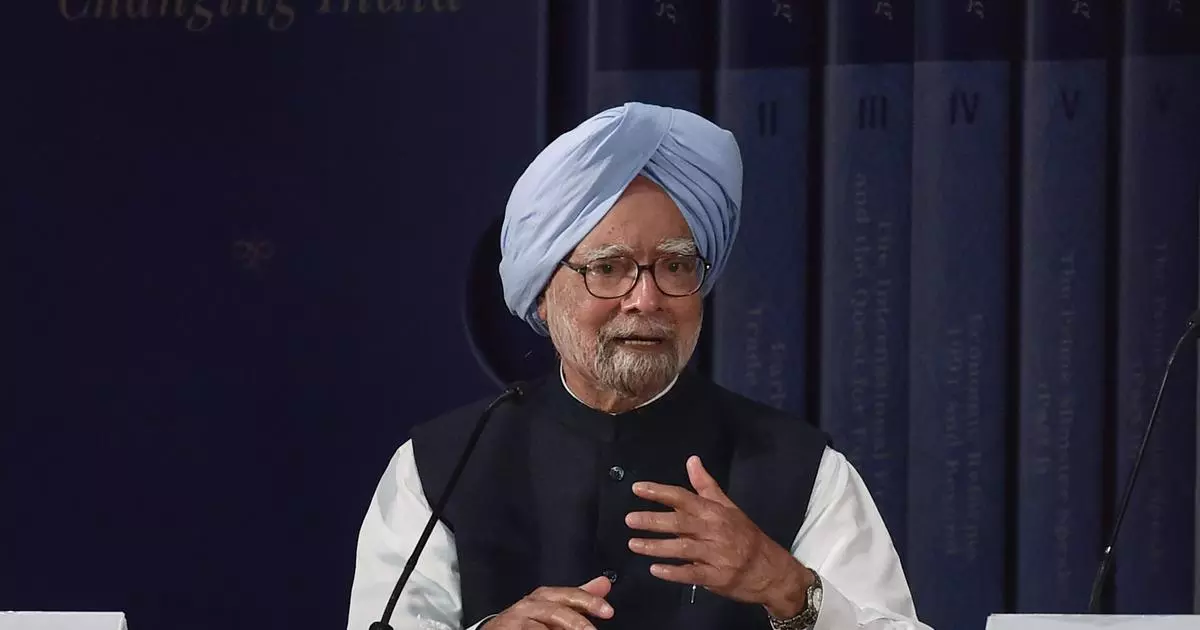
What Manmohan Singh said 10 years ago today
Last press conference an Indian PM held was on January 3, 2014, remarked journalist Pankaj Pachauri, sparking a debate

Senior journalist Pankaj Pachauri on Wednesday (January 3) ignited a debate when he commented on a Twitter (now X) that it was exactly a decade ago when an Indian prime minister last held a press conference.
Taking to the micro-blogging site, Pachauri shared a speech – dug out from the archive of the Prime Minister's Office (PMO) – of former Prime Minister Manmohan Singh, delivered on January 3, 2014. “The last press conference by an Indian PM was held exactly 10 years ago today. 62 unscripted questions answered with 100+ journalists present," tweeted Pachauri.
Pachauri was then information and communications advisor to Singh. More than 100 journalists were invited to the press conference, Pachauri recalled in his post, adding that Singh fielded 62 questions that were not scripted. It may be recalled that the Bharatiya Janata Party (BJP), which was then the main opposition party, had been critical of Singh for his 'silence'.
In an apparent dig at Prime Minister Narendra Modi, who is accused of not holding a press conference by both the media and the opposition parties, Pachauri shared a video clip of Manmohan Singh saying: "I am not a Prime Minister who is afraid of the media."
The Congress lost the Lok Sabha election to the BJP in May 2014. Modi has not held a single press conference since then. The few interactions that he has had with the media are highly structured, with no spontaneous questioning allowed.
An inclusive growth
In his 2014 press conference on this day, Manmohan Singh reflected on almost two decades of his regime, underlining both achievements and failures, covering a wide range of issues, such as GDP growth, employment, rising inflation, food security, education, alleviation of poverty and corruption, among others.
Singh recalled how the country registered an economic growth of 9.0 per cent, though a short-term acceleration, during his first tenure as the prime minister, and how it was an inclusive growth. “And it is not just the acceleration of growth that gives me satisfaction. Equally important is the fact that we made the growth process more socially inclusive than it has ever been,” he observed before the press.
Alleviation of poverty
He further spoke about “A New Deal for Rural India” and how the Mahatma Gandhi National Rural Employment Guarantee Scheme and “farmer friendly policies including raising support prices for farm produce, expanding credit to farmers, and through increased investment in horticulture, in rural development, and rural infrastructure, especially roads and electricity”, had helped alleviate poverty. “As a result, the number of people below the poverty line has come down by 13.8 crore,” Singh said.
Speaking on the importance of education, Singh told about the Sarva Shiksha Abhiyan and other measures such as setting up of “new universities, new institutes of science and technology, new industrial training centres” that his government took to widen educational opportunities. “Through Sarva Shiksha Abhiyan, through new scholarships for Scheduled Castes, Scheduled Tribes, Other Backward Classes and Minorities, and with a focus on the Girl Child and young women, we have widened educational opportunities,” he said.
Counting his failures
Singh was candid enough to admit some of the failures of his government, particularly in generating employment in the manufacturing sector and containing inflation. He also referred to high-profile allegations of corruption, “notably in regard to 2G spectrum allocations, coal block allocations and cases related to land”. “We have taken major steps to change the existing procedures for allocation of spectrum and coal by shifting to auctions so that these problems do not arise in future,” Singh said.
He also spoke about his efforts to “build long-term, stable and mutually beneficial relations with all major powers and all our Asian neighbours”. Since the general elections were a few months away, he reposed faith in the people and its leaders to deal with challenges. “I am confident that the new generation of our leaders will also guide this great nation successfully through the uncharted and uncertain waters of global change,” he added.
A picture in contrast
In contrast to Singh’s ability to interact with a characteristic candour on as many occasions as possible for him as a prime minister, Modi has all along kept a studied distance from the media. The only exception he made was during his state visit to the United States in June last year. Standing side by side with US President Joe Biden, Modi had answered two questions from journalists.
The presser was considered a rarity by the US media. “Though he loves speeches at public events, and has leaned into his monthly radio show as a way to deliver messages to the nation, any exposure to unscripted events had been a rarity before the White House event, and probably will be again afterward,” the New York Times wrote after the press meet.
Pachauri, who had worked with NDTV, BBC and India Today, among other media organisations, is now associated with Learning Winds Academy.
Manish Tiwari's list
Joining Pachauri in the debate, senior Congress leader Manish Tiwari shared Pachauri’s post and gave a breakdown of Singh’s interactions with the press, including those during his foreign visits. “Former Prime Minister Dr Manmohan Singh addressed/ interacted with the Press 117 times during his 10-year tenure between 2004-14,” the former Union Minister of Information and Broadcasting said in his post on X. “How many Press Conferences did @PMOIndia address between 2014-2024?” Tiwari added.

